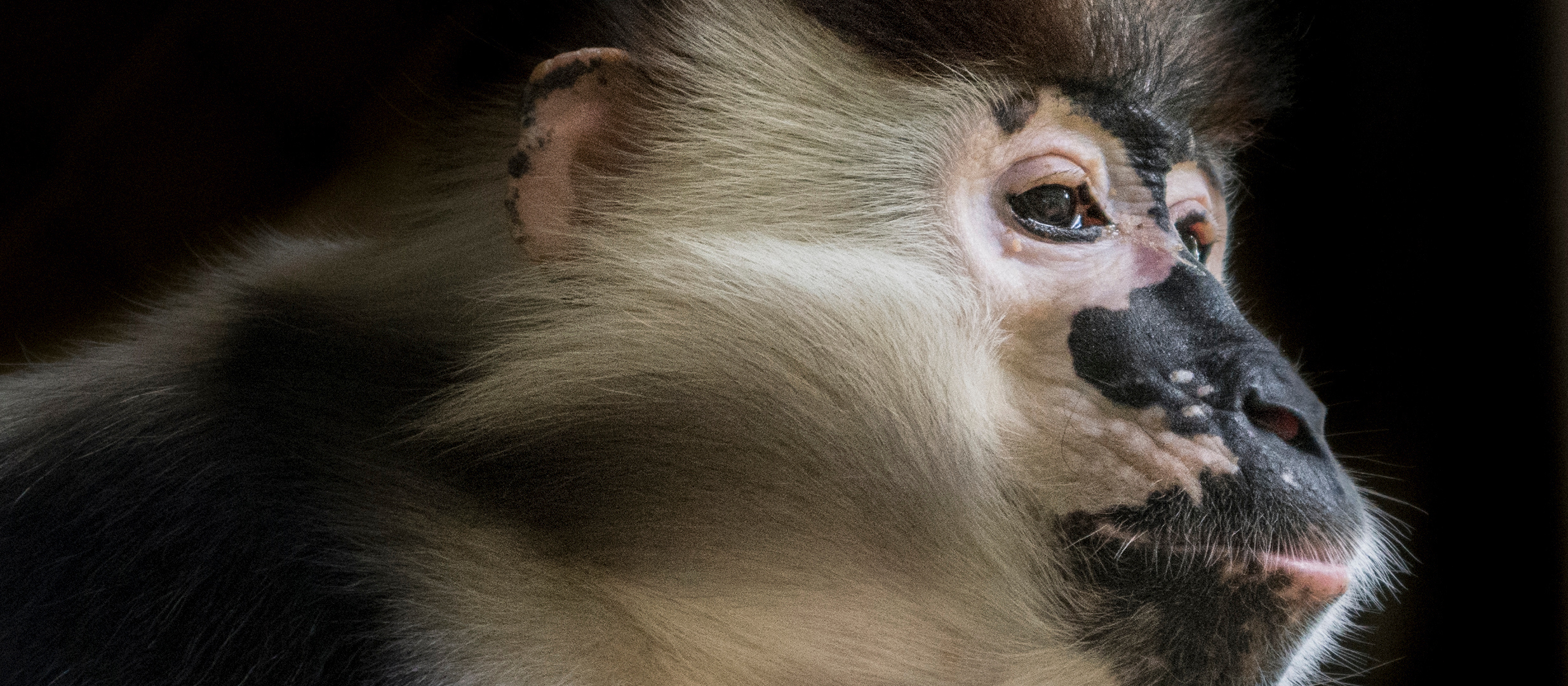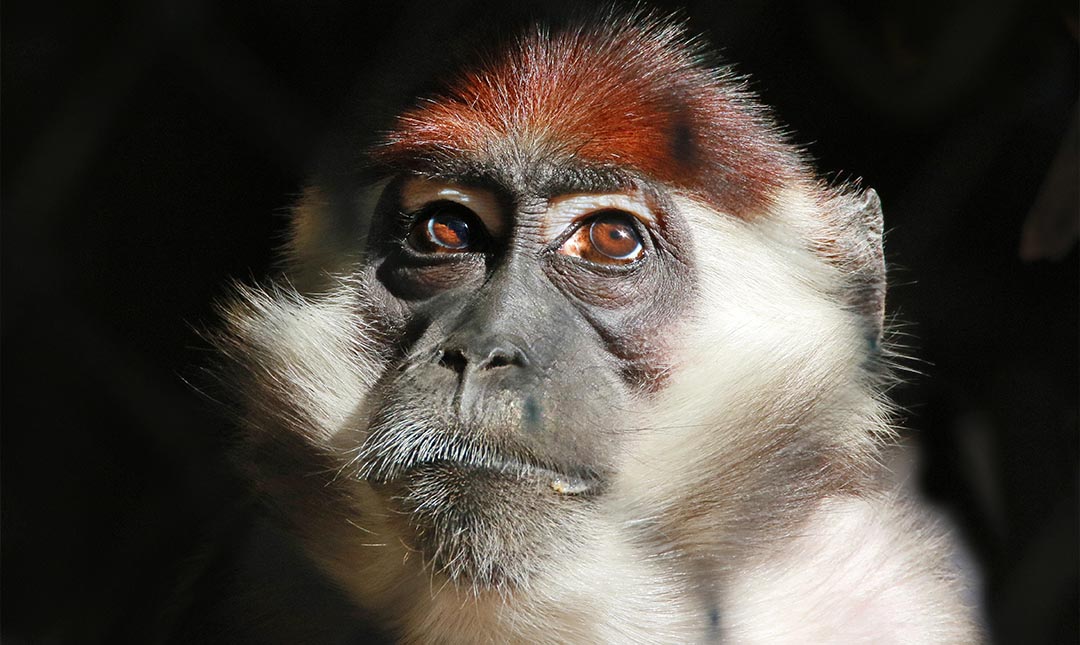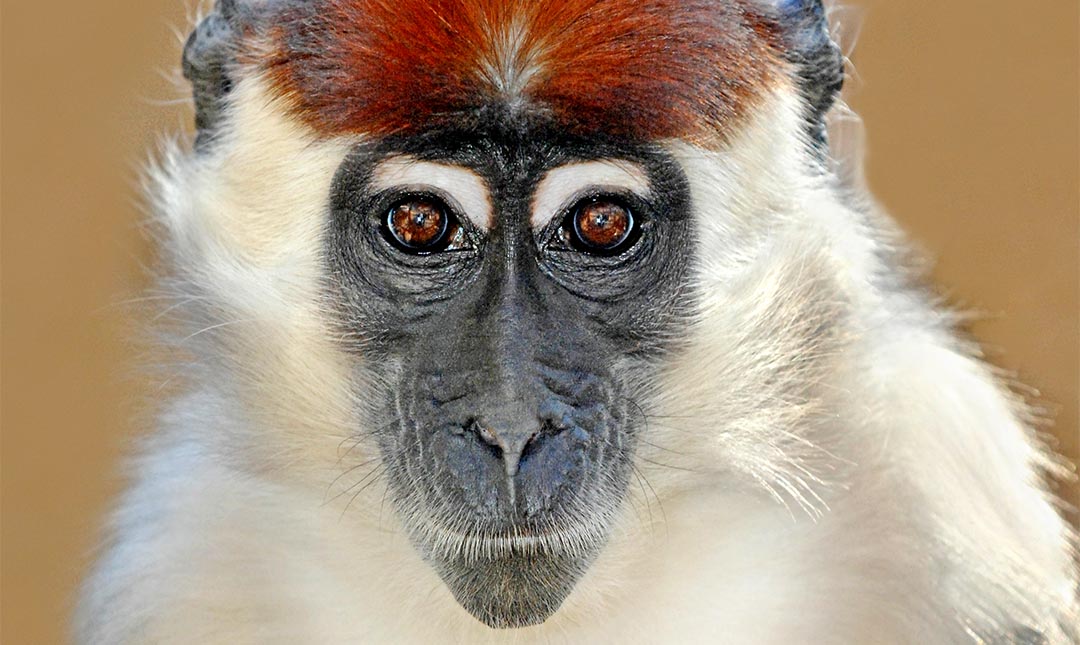About
Red-capped mangabeys are cheek-pouch monkeys, meaning they have extensive pouches in their cheeks and throats (similar to squirrels or chipmunks) that can be used when foraging to store food to eat later when they are safe from predators. Agile jumpers and climbers, mangabeys forage, sleep, and hide in trees using their long tails for balance. However, they usually escape predators such as leopards and eagles by running on the ground. Mangabey fingers and toes are partially webbed, making them excellent swimmers. They also have opposable thumbs and big toes, allowing them to grasp items with either their hands or feet.
Bright white fur around their eyes enhances social interactions such as blinking to communicate with other mangabeys. They also communicate using a variety of sounds, including shrieking, screaming, grunting, chuckling, barking, and roaring. Males produce a distinctive “whoop-gobble” call that can be heard half a mile away. These boisterous monkeys live in groups of 12 to 25 individuals with many males and females.
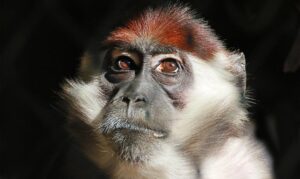
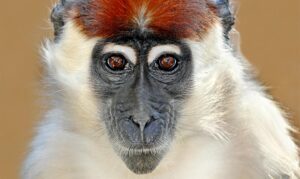
Habitat
Red-capped mangabeys live in the dense vegetation of inland swamps, mangroves, and rainforests along the coastal regions of west and central Africa.
Diet
These monkeys are primarily frugivorous. Soft and hard fruits comprise most of their diet, but they also eat palm nuts, seeds, young leaves, grass, mushrooms, grubs, insects, bird eggs, and agricultural crops, especially peanuts.
Physical Characteristics
A mangabey’s body length is 18 to 25 inches, with the tail slightly longer at 20 to 31 inches. They weigh 16 to 22 pounds, and males are about 25 percent larger than females. Lifespan in the wild ranges from the late tees to late 20s. In human care they can live up to 35 years. The oldest recorded red-capped mangabey lived much longer: 46 years!

